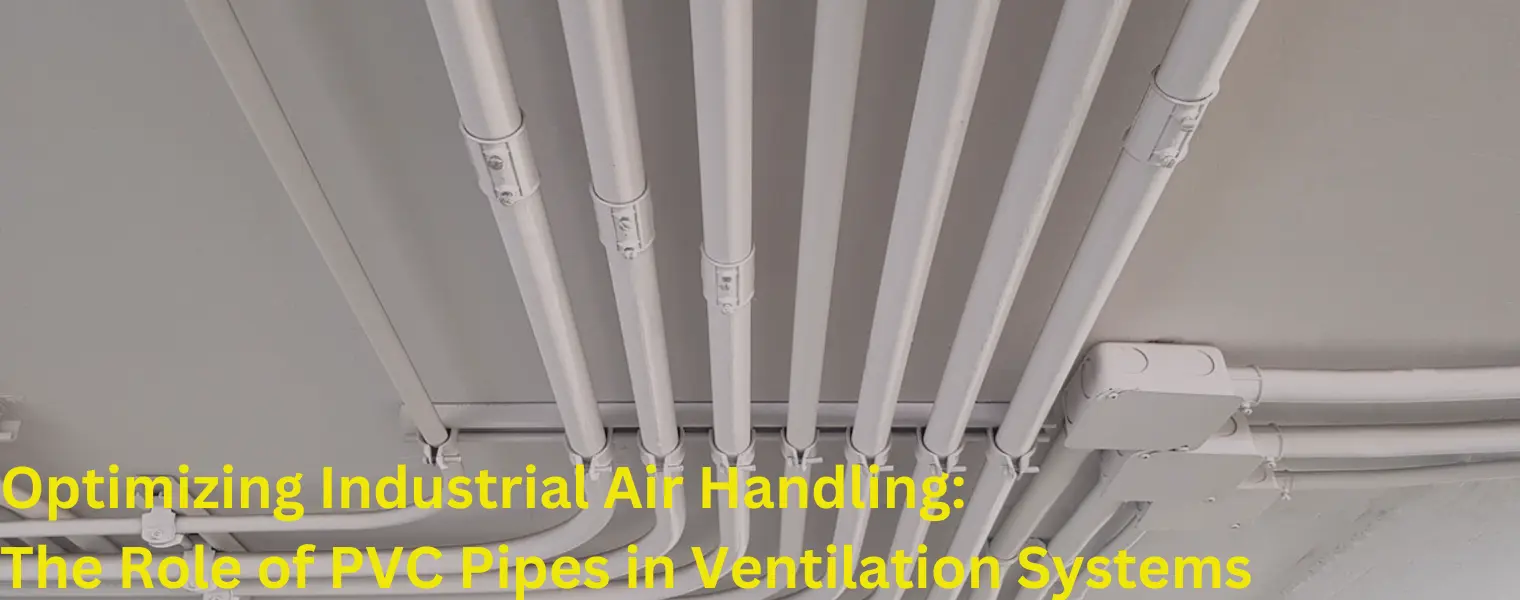
In the dynamic landscape of industrial environments, effective air handling and ventilation systems play a pivotal role in ensuring a safe and productive workspace. Among the materials making significant strides in this domain, Polyvinyl Chloride (PVC) pipes stand out for their versatility, cost-effectiveness, and durability. In this blog, we explore the indispensable role of PVC pipes in industrial air handling, shedding light on their applications, advantages, and contributions to fostering healthier work environments.
Industrial facilities generate a myriad of air pollutants and contaminants, ranging from dust and fumes to chemical byproducts. Efficient air handling systems are essential not only for maintaining air quality but also for ensuring the safety and well-being of workers. This is where PVC pipes emerge as a reliable and practical choice for conveying air, gases, and fumes within industrial ventilation systems.
One of the standout features of PVC pipes is their lightweight nature, making them easy to handle and install in complex ventilation configurations. Despite their lightness, PVC pipes boast exceptional durability, with the ability to withstand the rigors of industrial environments where exposure to varying temperatures and airborne particles is commonplace.
Industrial air handling systems often subject pipes to corrosive environments due to the presence of pollutants and chemicals. PVC's inherent corrosion resistance makes it an ideal choice for such applications, ensuring the longevity and structural integrity of the ventilation network. This resistance also translates to lower maintenance costs and reduced downtime for repairs.
The smooth interior surface of PVC pipes contributes significantly to the efficiency of airflow within ventilation systems. This characteristic minimizes friction, reducing the likelihood of turbulence and obstructions. The result is an optimized system that facilitates the seamless movement of air, promoting consistent ventilation performance.
Industrial facilities often present challenges in terms of space constraints and complex layouts. PVC pipes, known for their flexibility, can be easily adapted to navigate around obstacles and reach specific areas within a facility. This flexibility enhances the versatility of industrial ventilation designs, allowing for customized solutions that address the unique needs of each environment.
In addition to their practical attributes, PVC pipes offer a cost-effective solution for industrial air handling. The affordability of PVC, coupled with its long lifespan and minimal maintenance requirements, makes it a budget-friendly option without compromising on performance. This cost-effectiveness contributes to the overall economic viability of industrial ventilation projects.
Beyond their functionality, PVC pipes align with environmental sustainability goals. PVC is a recyclable material, and its production process is energy-efficient compared to alternative materials. Choosing PVC for industrial air handling systems reflects a commitment to eco-friendly practices, making it a responsible choice in the broader context of industrial sustainability.
In summary, incorporating PVC pipes into industrial air handling and ventilation systems is a strategic decision offering a multitude of advantages. From their lightweight and robust characteristics to corrosion resistance, smooth interior surfaces, and adaptability, PVC pipes play a crucial role in enhancing airflow efficiency within industrial environments. As industries persist in prioritizing safety, efficiency, and sustainability, PVC pipes emerge as a dependable cornerstone in constructing resilient and effective industrial ventilation systems. With extensive experience in the field, Polyfab has been a long-term supplier to various industries. Contact our proficient sales team for additional details and information.